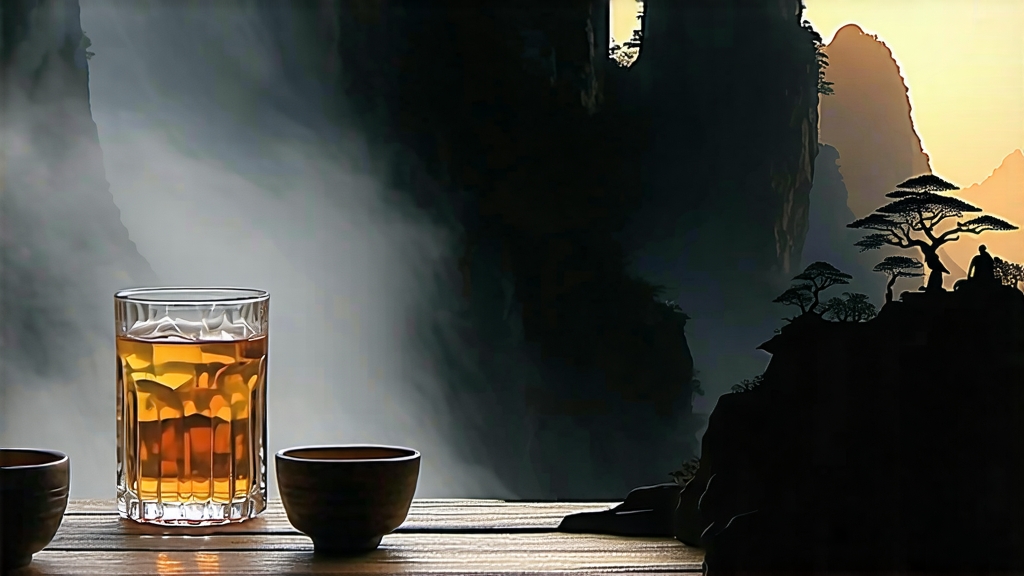
High on the scarlet sandstone cliffs of northern Fujian’s Wuyi Mountains, a single eccentric tea bush once startled a Tang-dynasty monk. Its spring buds, the colour of a newborn crane’s down, glowed pale yellow against the dark volcanic rock, inspiring the name Bai Ji Guan—“White Cockscomb.” Twelve centuries later that same genetic line, protected by Taoist abbots, Song-era scholars, and Ming emperors, still produces one of the rarest oolongs on earth. International drinkers who meet it for the first time often mistake the pale liquor for a white tea, then reel from the cascading flavours of grilled peach skin, wet slate, and lilac honey. This essay invites you into the microclimate, craft, and ceremony that coax such paradoxical grace from stone.
-
A cliff-born pedigree
Wuyi’s Danxia landforms were thrust upward 70 million years ago; their iron-rich, porous rock absorbs daytime heat and breathes it back to the vines at night, creating a 24-hour convection oven. Bai Ji Guan occupies only a 2-hectare pocket at 600 m known as Hui Yuan Yan, where perpetual cloud reduces photosynthesis, forcing the plant to stockpile amino acids and volatile esters. Qing court records list annual tribute at just 250 g—less than the emperor’s monthly ink ration—so cuttings were smuggled to inner Wuyi villages. Today true-original “mother tree” leaf is illegal to pick, but first-generation clones (called “qie zhi”) grown in identical rock crevices supply the tiny legal harvest. Every April 20–30, pickers rope down the cliff to gather one tender bud and two leaves, finishing before 10 a.m. when dew still weighs the amino acids. -
Varietal fingerprint
Unlike the broader, serrated leaves of Wuyi’s famous Da Hong Pao, Bai Ji Guan shoots are narrow, almost needle-like, with a downy jade back. The bush is slow-growing, yielding only 60 kg per mu (⅙ acre) versus 300 kg for Rou Gui. Chemically it is a semi-fermented oolong yet contains 2.3 % linalool—double most cliff teas—explaining the perfume that escapes the cup like steam from a monsoon street. Its polyphenol profile is low in bitterness, so even novices can steep it hard without astringency. -
Craft: coaxing rock into liquor
The 24-hour transformation from mountain herb to finished tea is a choreography of timing, temperature, and intuition.
Withering: leaves are spread 2 cm thick on bamboo trays set inside the cave mouth where the draught is 22 °C with 75 % humidity. Every 20 minutes they are tossed like salad to bruise the edges, initiating oxidation that will stop precisely at 30 %.
Shaking: at dusk the leaves are poured into a 45 cm diameter rattan drum and rhythmically tumbled for 8 minutes. The drum is hand-rotated only 15 times; more would tear the delicate buds. This partial cell rupture releases jasmine-like aldehydes.
Fixation: a 280 °C wok flash-fries the leaves for 3 minutes, locking the greenish hue. Masters listen for the “pop” of moisture escaping the midrib—one second too long and the mineral note collapses into spinach.
Rolling: the hot leaves are wrapped in calico and rolled under 25 kg granite blocks, twisting them into tight, black-striped pellets while forcing juices to the surface.
Charcoal baking: the signature act. Three fir-charcoal ovens are set at 120 °C, 90 °C, then 70 °C for successive 2-hour cycles over 40 days. Between bakes the tea rests in reed baskets so that residual heat can travel from skin to core, melding floral and rocky aromas into the famed “yan yun”—rock rhyme.
- Tasting the mountain
A proper evaluation uses a 100 ml gaiwan and 5 g leaf at 95 °C. The first infusion, 10 seconds, releases a pale champagne liquor with a nose of grilled apricot and rain on basalt. The second, 15 seconds, adds a cool menthol finish that makes the tongue feel suddenly naked. By the fifth, 45 seconds, the colour deepens to